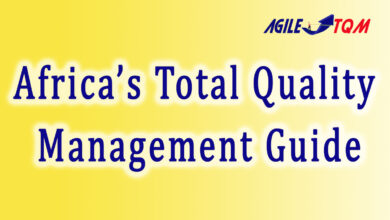TQM and Six Sigma Similarities and differences

Six Sigma is a set of techniques aimed at improving the production processes of a company in order to achieve a certain level of quality. Therefore, Six Sigma often relates to the production processes of a company. Thus, Six Sigma focuses on reducing process variation and enhancing process control. Furthermore, Six Sigma is a business process that by eliminating product or process defects, reduces costs and increases profitability through stable and capable processes, (Linderman et al. (2003), Schroeder (2006)). In addition, the Six Sigma methodology is a business strategy that is used to reduce the variability of the process through the effective use of tools and statistical techniques. Furthermore, it is a rigorous and disciplined program that uses data and statistical analysis to define a problem, measure the process, improve the company’s operating performance (by eliminating defects, errors, or failures), and control the manufacturing, service, and transactional environment, (Montgomery (2010), Aldowaisan et al. (2015)).
Six Sigma dates back to the late 1980s when Bill Smith, an engineer, developed this statistical concept while working for the famous US telecommunications company Motorola. He is therefore considered today as the founder of Six Sigma, even though this approach has had the opportunity to evolve from its original form. Countless companies have been interested in the “success stories” circulating about the impressive results of Six Sigma, hoping to achieve such results as well. Well-known companies claim to have been successful in achieving these hard-to-reach goals.
Six Sigma Methodology:
in statistics, the letter sigma represents the symbol used to define the standard deviation. It is therefore a tool for determining how the data obtained are close to a certain average. When a company wishes to analyze the rate of “viable” products compared to “non-viable” products, it can use this tool according to its own tolerance criteria thanks to a predetermined number of sigmas, thus creating a tolerance scale making it possible to confirm whether a service, apart or a product fits the pre-established criteria. Six Sigma, therefore, aims to make the quality gap between services or products as small as possible; thus offering constant quality to customers and therefore customer satisfaction. The 6 Sigma level is far from an obvious goal to achieve. In fact, for a company to reach the 6 Sigma objectives, no more than 3.4 defects are needed for 1 million services or items produced, i.e. the equivalent of a success rate greater than 99,99% For some companies, this is, therefore, a difficult figure to achieve.
Six Sigma is not limited to a single methodology because it is a complex system. However, DMAIC is undoubtedly the preferred methodology to achieve the desired results most efficiently. DMAIC stands for the following terms: define, measure, analyze, improve, control. We present here similarities and differences between TQM and Six Sigma, referring to the studies of Anderson et al. (2006), Dahlgaard and Dahlgaard‐Park (2006).
- Engagement of top management;
- Employee engagement;
- Focus on customer satisfaction.
- Only in Six Sigma a parallel organisational structure focus on limiting variation: Black Belts, Green Belts, Master Black belts and champions.
- Six Sigma focuses on the project level, while, TQM focuses on the organisational level.
- Six Sigma requires specialists; on the contrary, in TQM everybody contributes.
- Total quality management aims for zero defects, while Six Sigma seeks to maximise output.


